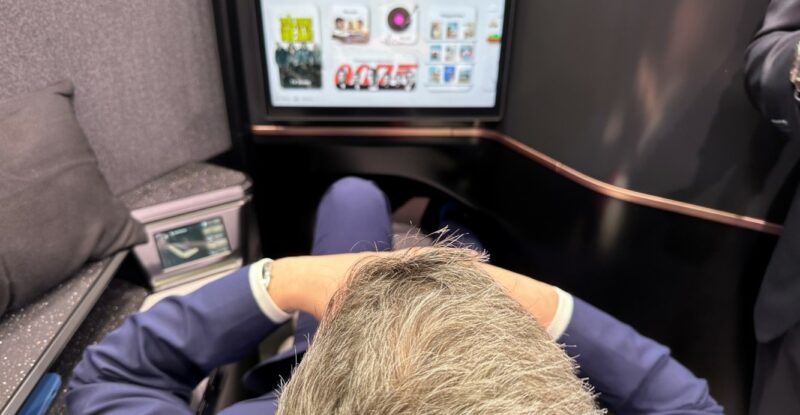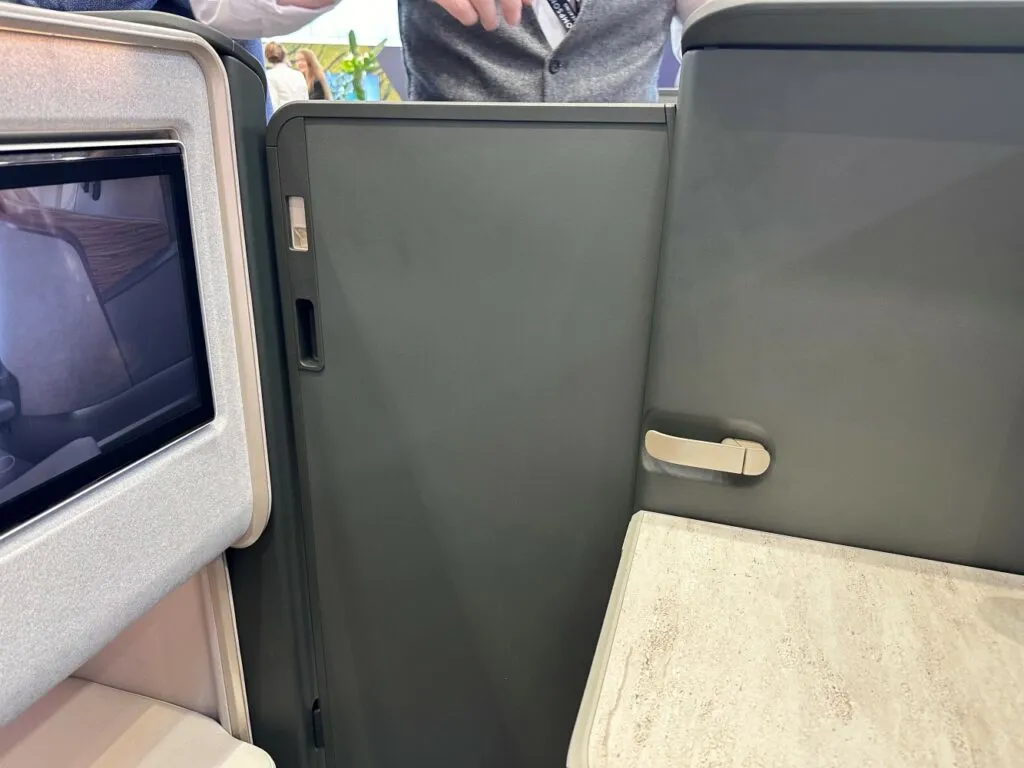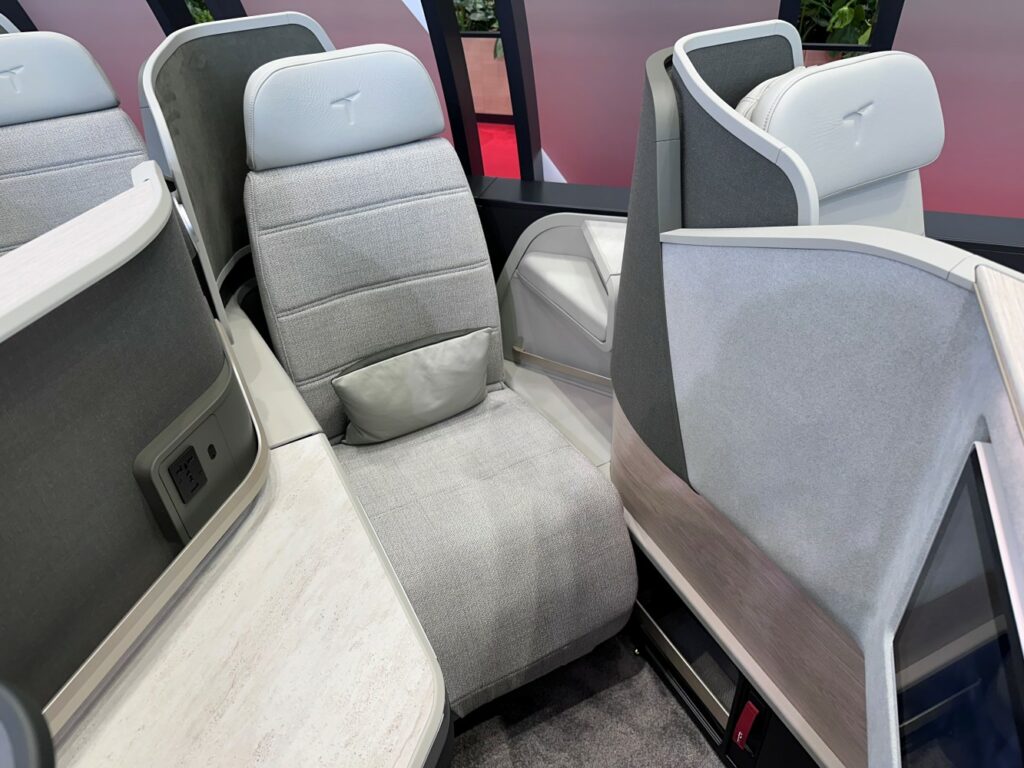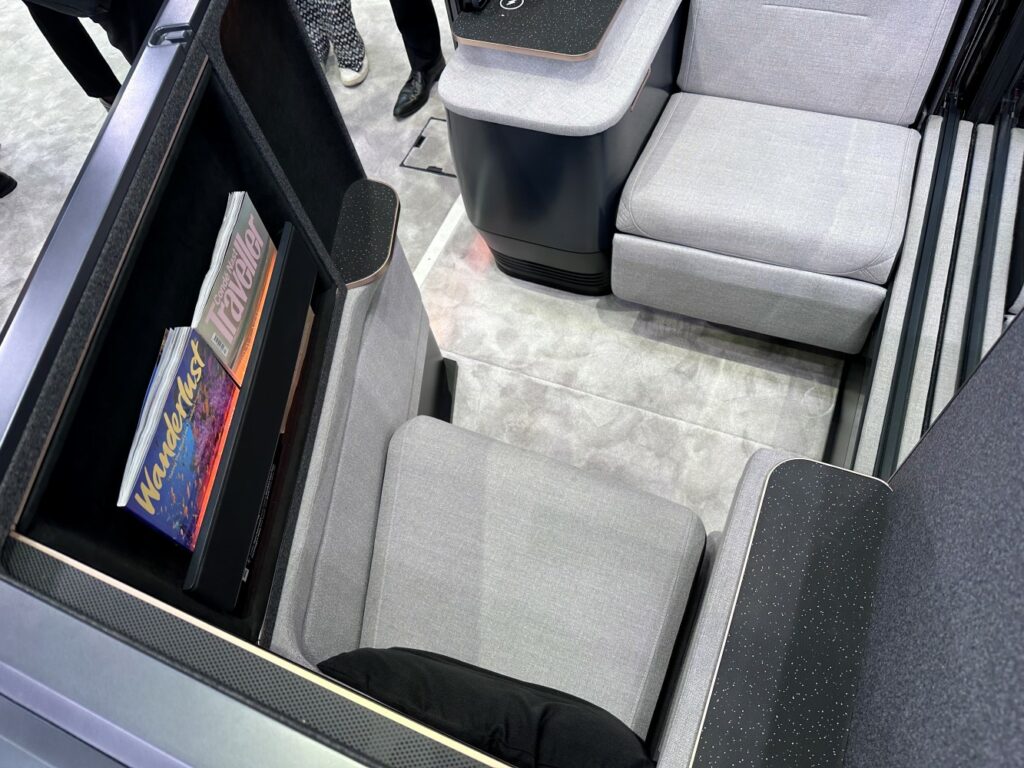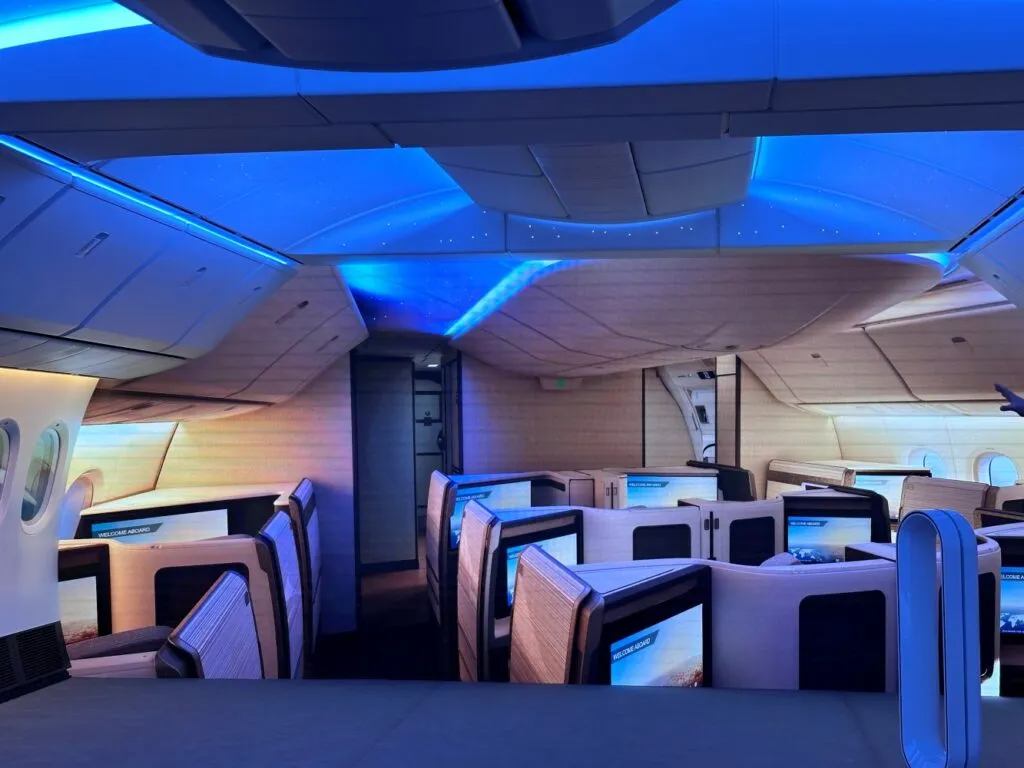 More than twenty years on from the first herringbone seating in business class — the original Virgin Atlantic Upper Class Suite — and almost that long since the first staggered seat with direct aisle access arrived (with Delta or Swiss, depending on how you measure), it’s remarkable how many of the world’s airlines have coalesced around these seats.
More than twenty years on from the first herringbone seating in business class — the original Virgin Atlantic Upper Class Suite — and almost that long since the first staggered seat with direct aisle access arrived (with Delta or Swiss, depending on how you measure), it’s remarkable how many of the world’s airlines have coalesced around these seats.
With very few outliers (like Finnair’s sofa, Singapore’s hybrids, or Emirates’ forward-facing non-direct-aisle-access 777 seats), there are many detailed criteria driving these decisions, but after talking to airlines, seatmakers and aircraft manufacturers, some are popping up as more impactful than others.
Both kinds of seat offer direct aisle access, large IFE screens and the option of a privacy door, so the herringbone versus stagger question remains a fascinating one to observe as airlines continue their seat selection processes for the next generation of widebodies.
(For narrowbodies, the situation is clear: the size of the airframe means that staggered products with direct aisle access are not suitable here, and the alternating step-over stagger without direct aisle access for every passenger of Thompson Aero Seating’s original-size Vantage, despite its upgrades, is now being superseded.)
So, herringbone or stagger — and, if herringbone, which?
Some airlines are firm in their answer, and their usual reason cited here is consistency across their fleet, as well as a reduced overall fleet part count (and thus cost) when it comes to maintenance, repair and overhaul.
Cathay Pacific is fully herringbone, while British Airways is leapfrogging its elderly forwards-backwards seat without direct aisle access as it continues to install its Club Suites, again a consistent latest product. Air France, also a laggard in installing direct aisle access, is now becoming consistent in its multiple-supplier herringbone policy, although it operates subfleets of staggered seats and even a non-direct-aisle-access seat on its leisure routes.
But many airlines seem surprisingly willing to choose “both” as an answer.
Look at Virgin Atlantic (stagger on the A330neo, herringbone on the A350), or Qatar Airways (staggered Qsuite, herringbone 787). Japan Airlines is even more of a longhaul zig-zag: stagger on some 787s and 777-300ER, herringbone on the 777-200 and then a different herringbone on some 787s, a different stagger on the 767, then a third stagger on the new A350.
The underlying answer here is largely around a mixture of per-aircraft cost, supplier capacity, linefit availability and density. Often, there will be an answer about getting the best seat available right now.
There are also spoiler criteria.
The first is around the aircraft. The A380, once the halo product for fleets, is largely out of the customisation picture for everyone apart from Emirates when it comes to refurbishments: for those airlines retaining smaller numbers of aircraft, an off-the-shelf option like Lufthansa is taking with Vantage XL (to sit alongside its “Lifthansa” ex-Philippines A350s) for its superjumbos. The 747 is a similar story.
Meanwhile, operators of the widebodies with smaller fuselage cross-sections — specifically the A330 (including the neo) and 787 — have been leaning towards herringbones recently, especially as the Ascent herringbones from the Boeing-Adient joint venture come to market, first with Qatar and now with Hawaiian. It’s notable, too, that Adient is now showing a hybrid herringbone option to enable a more “honeymoon” style of experience.
For the wider A350 and 777 widebodies, it’s much more of a mixed bag, especially as the generation of doored mini-suites arrives onboard.
A further spoiler is what’s underneath the seat. Several manufacturers are spurring the growth of a shared family of structural underpinnings and mechanical functionality between herringbones and staggers made by the same manufacturer. Startup seatmaker Unum is perhaps the most open about this, but Safran has been talking about it since the days of their lineup being Versa vs Optima as herringbone vs stagger.
This not only reduces part count (and thus cost, maintenance, etc) but also leads to more investment in the kinematics, actuation and movement of the seat, which is a strong net positive.
There is, however, still a gap in the market — and a growing one. Early 787 and even some early A350 aircraft are long in the tooth, while the A330 (either in the large number of older aircraft or in the A330neo form) is still missing the dealmaker seat for many airlines. Early second-generation 777-300ER cabins, too, need upgrades, and the 777X will need new seats when it eventually launches. Has the time ever been more ripe for a genre-buster?
Related Articles:
- Narrowbody herringbones: the 3D Wave and why it needs a comeback
- Avoiding coffin class: the new inward-facing herringbone challenge
- AvioInteriors: Heric 2023 returns as a credible low-cost herringbone
- Unum Two staggered business suite may be Unum’s first sale
- What does a five-star business class seat look like in 2023?
Featured image credited to John Walton




